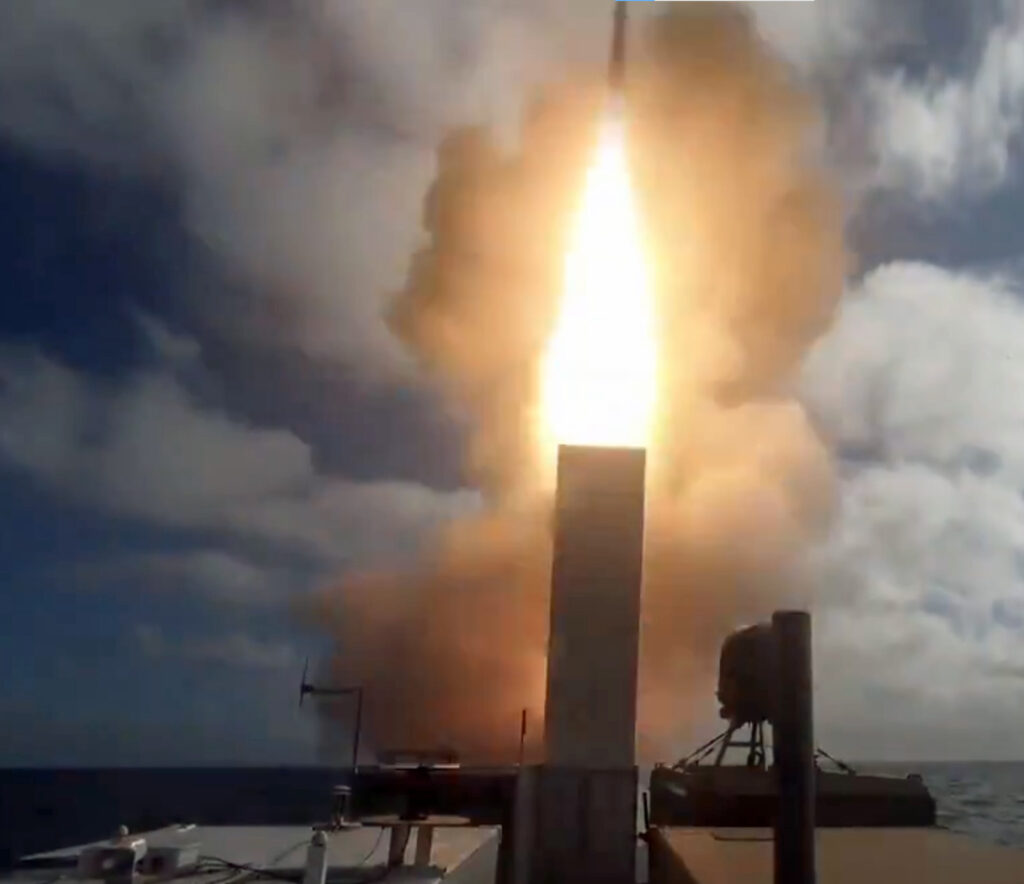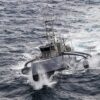
Requirements for the Modular Attack Surface Craft (MASC) USV program were announced by the U.S. Navy’s Unmanned Maritime Systems Program Office (PMS 406) this week. The program is looking to deliver up to three different USVs for wide scale operational use in the U.S. Navy as a culmination of the U.S. Navy’s extensive prototype and development of Medium and Large USVs.
The U.S Navy is seeking a wide range of new medium and large USVs as part of its Modular Attack Surface Craft (MASC) program, an effort started as the end result of NAVSEA’s Future Unmanned Surface Vessel request for information (RFI) which sought an open ocean high endurance, non-exquisite, autonomous vessel that could be delivered to the fleet to rapidly expand the surface fleet’s capacity and capability.
PMS 206 and NAVSEA want first deliveries within 18 months from a prototype award, with an emphasis on readiness, remote operation, open architecture, and interoperability with existing U.S. Navy surface forces. An additional emphasis is placed on non-exquisite platforms to allow multiple shipyards to repair and maintain the MASC USVs.
“The Department intends to swiftly prototype and demonstrate one or more MASC USVs capable of embarking containerized payloads. This prototype will seamlessly maneuver with other Navy surface vessels or operate independently. The objective is for a non-exquisite vessel design that maximize use of commercial standards to allow construction and repair at multiple shipyards.”
U.S. Navy Documents
The program will advance in three phases; the first phase will allow companies to pitch solutions and prove viability with an attached schedule to construct a prototype, the second phase marks the beginning of production site pitches to U.S. Navy representatives, and the third phase marks Request for Prototype Proposal (RPP) awards to selected companies.
The MASC program looks to deliver three distinct USV types to the U.S. Navy, all making heavy use of containerized payloads. The smallest platform aims to carry a single 20-foot CONEX boxes, with the largest shooting for four or more 40-foot containers like the Mark 70 Payload Delivery System. Mark 70 PDS have already been deployed on USVs as part of other fleet experimentation trials.

“Each proposed vessel solution enables the Navy to meet a different operational need. Solutions should be sufficiently mature. The Navy desires vessel solutions that will address up to three (3) operational needs with each vessel providing a non-exquisite solution.”
U.S. Navy Documents
Vessel one is the baseline Modular Attack Surface Craft (MASC) which the U.S. Navy says addresses “the need for a fast, high capacity, embarked payloads platform”. MASC will carry two 40-foot ISO containers that consume 75kW of power each. The baseline range with a payload of 25 metric tons is set at 2,500 nautical miles, all while maintaining 25 knots up to Sea State 4.
The U.S. Navy’s Ghost Fleet Overlord program tested 40-foot ISO containers on USV Ranger. The unmanned ship fired an SM-6 missile from a containerized VLS system now known as the Mark 70 Payload Delivery System (PDS). A similar test was conducted on a commercial ship last year in a ballistic missile defense (BMD) test. Both efforts likely supported the U.S. Navy’s efforts towards the MASC program.

Vessel two is a High-Capacity MASC with double the payload of the baseline variant. It will carry four 40-foot ISO containers each drawing 45kW of power while maintaining a “high endurance, high capacity” capability. A configuration of four such containers would allow a High-Capacity MASC to carry four reloadable Mark 70 launchers for sixteen single-packed missiles like Tomahawks or Standard missiles, or sixty-four quad-packed missiles like the Evolved Sea Sparrow Missile (ESSM).
Vessel three is a single-payload USV, dubbed the Single Payload MASC, embarking a single 20-foot ISO container drawing 75kW of power. The documents explicitly state that the container should have no obstructions at the rear, likely for a towed array ASW capability or similar anti-submarine system like the Liberator concept, which Naval News recently covered. Liberator aims to pair heavyweight torpedo launchers to unmanned ships.
The [twenty-foot equivalent unit] payload should have no obstructions aft of the payload to the [the stern of the ship].”
U.S. Navy Documents
Identified critical attributes in the documents released by the U.S. Navy include company experience and design maturity to deliver a completed USV within 18 months from award, interoperability with existing U.S. Navy systems, autonomous maneuvering with and without RF emissions, unobstructed payloads from all directions but the bow, and open architecture software.
Additional attributes include USVs built to commercial construction standards , automatic RF control with respect to EMCON mission requirements, interior space for additional hardware and up to 8 personnel, autonomous operation and high speeds at Sea State 4-5, software that allows for multiple USVs controlled simultaneously, and compliance with International Traffic in Arms Regulations (ITAR) to enable foreign military sales.
Many of the aforementioned attributes are design requirements for other USV programs and prototyping efforts. The U.S. Navy has been working towards a MASC-like program for several years across its various risk reduction and prototype programs. MASC draws from those programs to develop a working number of USVs for the fleet.
“[MASC] leverages years of investment and full scale demonstration efforts in autonomy, endurance, command and control, payloads, and testing from the Defense Advanced Research Projects Agency (DARPA) Anti-Submarine Warfare Continuous Trail Unmanned Vessel (ACTUV), Office of Naval Research (ONR) Medium Displacement Unmanned Surface Vehicle (MDUSV)/Sea Hunter (FY 2017 to FY 2021), and Office of the Secretary of Defense Strategic Capabilities Office (OSD SCO) Ghost Fleet Overlord Large USV experimentation effort (FY 2018 to FY 2021).”
U.S. Navy
NAVSEA and PMS 406 are looking for mature solutions for all three MASC variants, with preference given to companies have experience in developing and fielding unmanned surface vehicles and related software for control and maneuver.
On the fleet side, the U.S. Navy stood up Chimera Detachment Charlie, part of Unmanned Surface Vessel Squadron (USVRON) One and Surface Development Group (SURFDEVGRU) One, on June 27 in a ceremony at Naval Base Ventura County. Command of the unit was assumed by LT Allen Yancoskie, U.S. Navy.
Detachment Charlie’s sister units Alpha and Bravo operate the Medium USVs Sea Hawk and Sea Hunter, Ghost Fleet Overlord-developed USVs Mariner and Ranger, and the No Manning Required Ship (NOMARS) Defiant.
Chimera Detachment Charlie will ultimately operate the Modular Attack Surface Craft family of USVs.
“The mission of Chimera Det CHARLIE is to build a digital infrastructure that integrates and adopts unmanned capabilities at speed and scale while creating a capability-centric approach for unmanned contributions to the force. Commanding Officers of Chimera Dets are Surface Warfare Officers selected for Early Command. Chimera Dets embark designated Afloat Control Units (ACUs) and operate Modular Attack Surface Craft (MASC) Unmanned Surface Vessels (USVs).”
Information Systems Technician First Class, Information Warfare, Benjamin Adkins, U.S. Navy

The MASC program represents the greatest shift towards an unmanned fleet the U.S. Navy has seen in several years and will likely grow in scale and scope as further requirements are refined with prospective manufacturers. MASC is ultimately a culmination of years of investment and development into technology surrounding unmanned surface vessels and represents the pinnacle of MUSV and LUSV research and development across DARPA and the U.S. Navy.



